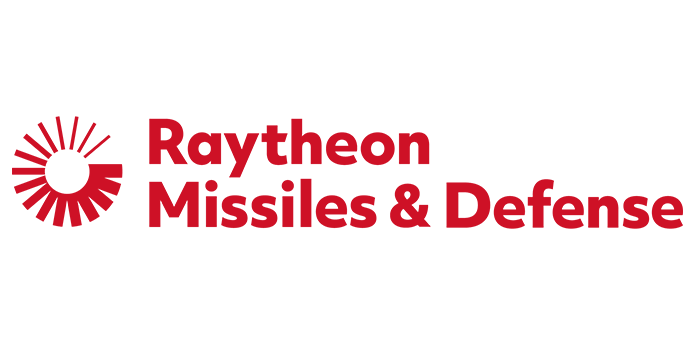
Hypersonics Forum
July 12th, 2022 9:00am-11:00am EST Virtual, ON24
The U.S. and our allies are facing an immediate and evolving threat from adversaries who are actively developing and deploying higher-tech offensive weapon capabilities than ever before. Consequently, advanced hypersonic weapons and vehicles have emerged as some of the highest priorities for defense agencies and military branches as the nation works to combat significant adversarial pacing threats, bolster deterrence power and remain at the forefront of global competition.
Currently, the U.S. Army and Navy are working to enhance their strike capabilities in contested environments through the joint development of two hypersonic weapons, the intermediate-range Conventional Prompt Strike capability and the Long Range Hypersonic Weapon. As these two weapons undergo testing, analysis and further development, they lay the foundation for consequential advancements on the horizon in next-generation hypersonic defense technology.
With speeds more than five times the speed of sound, hypersonic weapons are expected to increase the range, efficacy and speed of air and missile defense capabilities, but factors like high cost, lack of funding and maneuverability pose challenges for the Department of Defense in the research, development and implementation of these cutting-edge hypersonic technologies.
Join ExecutiveBiz Events for the platform’s Hypersonics Forum to hear from distinguished federal and industry officials as they discuss the increasingly crucial role of public-private partnerships in the next level of hypersonics development as it pertains to paramount issues including national security, military capabilities and strategic competition in today’s constantly evolving threat landscape.
Michael White, principal director of hypersonics for the DOD’s OUSD R&E, will serve as keynote speaker. The panel discussion will focus on how to deliver capability at capacity; our panelists will address how digital engineering technologies, robust supply chains and a highly skilled workforce can help to accelerate the development of hypersonic weapons, as well as the challenges and opportunities that come with marrying regulations and acquisition strategies with innovative production methods from the commercial world.
-

Dr. Jeffrey Boulware -
Technical Director and Deputy Division Chief, Joint Integrated Air and Missile Defense Organization
Dr. Boulware serves as the Technical Director and Deputy Division Chief for the Joint Integrated Air and Missile Defense Organization (JIAMDO) within the J8’s Deputy Directorate for Force Protection (DDFP). As Technical Director, he is the senior scientific and technical advisor to JIAMDO, overseeing research, development, and acquisition associated with integrated air and missile defense. As the Deputy Division Chief, he executes all aspects of the JIAMDO mission to support the Chairman of the Joint Chiefs of Staff (CJCS) by coordinating development of air and missile defense capabilities. Dr. Boulware’s prior experience spans scientific research and development, systems engineering, test and evaluation, program management, and acquisition for the government, private sector, and a Federally Funded Research and Development Center (FFRDC). His research activities include theoretical and experimental fluid mechanics, wind tunnel testing, microgravity testing, arcjet testing, space exploration architecture design, and cryogenic magnetohydrodynamics. Within the public sector, he has worked at the Air Force Nuclear Weapons Center, Air Force Sustainment Center, and the National Reconnaissance Office. He holds a PhD in Mechanical and Aerospace Engineering from Utah State University, a Master of Military Operational Art and Sciences from Air University, a Master of Science in Aeronautics and Astronautics from the University of Washington, and a Bachelor of Science in Aeronautics and Astronautics from the University of Washington. He is also an Associate Fellow of the American Institute of Aeronautics and Astronautics.
-
Dr. Gillian Bussey -
Special Assistant, Office of the Chief Scientist, U.S. Department of the Air Force
Dr. Gillian Bussey currently serves as Special Assistant at the US Air Force Office of the Chief Scientist. She is the former director of the Joint Hypersonics Transition Office (JHTO) in the Office of the Undersecretary of Defense, Research, and Engineering, Advanced Capabilities. She was a special advisor to the Assistant Director, Hypersonics office as a detailee from the CIA advising the department on hypersonics weapons, technologies, and applicable missile defenses from June 2018 to April 2020. She was a special advisor to the Assistant Director, Hypersonics office as a detailee from the CIA advising the department on hypersonics weapons, technologies, and applicable missile defenses from June 2018 to April 2020. As the acting director for Aerospace Technologies from July 2019 to February 2020, she was also responsible for overseeing DoD activities in air platforms and related propulsion technologies. She was responsible for airbreathing hypersonics and engagements with allies and universities. She spent six months on assignment at the Defence Science Technology Group (DSTG)’s Applied Hypersonics Branch near Brisbane, Australia in 2015 and 2016 supporting the joint US Air Force-DSTG HIFIRE program and DSTG’s hypersonics programs. She was CIA’s hypersonics systems and technologies analyst in the Weapons Counterproliferation Mission Center from 2011 to July 2018. She analyzed flight data from hypersonic systems and air-launched weapons from May 2007 to September 2012. She has degrees in physics and political science from the Massachusetts Institute of Technology (2005) and a M.S. and Ph.D in aerospace engineering from the University of Maryland, College Park (2009, 2012). While at the University of Maryland, her research focused on hypersonics. She is an AIAA associate fellow and member of a panel reviewing NASA’s Advanced Air Vehicles portfolio.
-

Ralph Klestadt -
Hypersonics Chief Engineer, Raytheon Missiles and Defense
Ralph Klestadt is a level one chief engineer for Raytheon Missiles & Defense (RMD). A Senior Principal Fellow in Engineering, Mr. Klestadt is chief engineer for the Advanced Hypersonic Weapons portfolio, which includes both offensive and counter hypersonics systems. Prior to this, he was chief engineer for the HAWC program and managed the Aerodynamics department in the Guidance, Navigation, and Control center. Over his 44-year career, Mr. Klestadt has led a variety of system development efforts for programs in every mission area, including Advanced Technology (LRSO), Land Warfare and Air Defense (NLOS and CKEM), Air Power (AMRAAMTM and AIM-9XTM), Naval Power (RAMTM and Stinger), and Strategic Missile Defense (SM-3TM and KEI). His background in aerodynamics, propulsion, and vehicle design enables him to provide senior leadership for advanced-vehicle configuration development. Mr. Klestadt earned a bachelor’s degree in aerospace engineering and a master’s degree in applied aerodynamics.
-

Dr. Kelly Stephani -
Associate Professor, Department of Mechanical Science and Engineering, Center for Hypersonics & Entry Systems Studies, (CHESS), University of Illinois Urbana-Champaign
Kelly Stephani is Associate Professor and Kritzer Faculty Fellow in the Department of Mechanical Science and Engineering at the University of Illinois at Urbana-Champaign (UIUC). She currently serves as Deputy Director of the Center for Hypersonics and Entry Systems Studies (CHESS) at UIUC, and is Co-Director of the University Consortium for Applied Hypersonics (UCAH) under OUSD/JHTO. She earned her Ph.D. in Aerospace Engineering in 2012 from The University of Texas at Austin, and was a Postdoctoral Research Fellow at the University of Michigan Aerospace Engineering Department prior to joining the faculty at UIUC in 2014. Prof. Stephani’s background is in hypersonics, with emphasis on modeling and high-performance computing. Broadly, she develops predictive models and design tools for: (i) Materials, structures, and thermal protection systems (TPS), (ii) Hypersonic environments and phenomenologies, (iii) Applied aerodynamics/aerothermodynamics. Her technical expertise centers on computational tools that quantify thermal, chemical, and mechanical degradation of TPS materials in the hypersonic flight environment. Her work leverages advanced numerical methods to construct physics-based models, informed by world-class material characterization, experimental techniques, and full vehicle integration, to create a system-level design platform for the Nation’s next generation of hypersonic vehicles. Prof. Stephani is an AIAA Associate Fellow, and is recipient of numerous awards including the NASA Early Career Faculty (ECF) Award (2015), AFOSR Young Investigator Program (YIP) Award (2017), and the Presidential Early Career Award for Scientists and Engineers (PECASE) (2019).
-

Dr. Yvette Weber -
Associate Deputy Assistant Secretary of the Air Force for Science, Technology and Engineering, U.S. Department of the Air Force
Dr. Yvette S. Weber, a member of the Senior Executive Service, is the Associate Deputy Assistant Secretary of the Air Force for Science, Technology and Engineering, Office of the Assistant Secretary of the Air Force (Acquisition, Technology and Logistics), the Pentagon, Arlington, Virginia. Dr. Weber is responsible for accelerating the Department of the Air Force technological advantage by enabling world class scientists and engineers to securely transition to cutting edge S&T and prototyping, and transform experimentation and engineering capabilities. She supports the Air Force Acquisition Executive by providing technical advice and counsel on major acquisition programs and rapid prototyping. She assists in the functional management of more than 16,000 military and civilian engineers. Dr. Weber advises the preparation of policy, guidance and advocacy for the Air Force's annual $2.9 billion science and technology program and $1 billion developmental prototyping and experimentation program. As part of this role, she assists in overseeing the Air Force’s international science and technology outreach via various bi-lateral and multilateral engagement fora, including the NATO Science and Technology Organization and the NATO Air Force Armaments Group. Dr. Weber was born in Astoria, New York. She entered civil service in 1992, prior to completing her Ph.D. in Engineering from the University of Maryland. She has held various assignments in the Air Force Research Laboratory, Headquarters for Air Force Materiel Command, and at the Air Force Life Cycle Management Center. These assignments have spanned the spectrum of basic, applied, advanced technology research, development and test; systems engineering policy; engineering leadership and management; and system program management across a wide variety of Air Force weapon systems. Prior to assuming her current position, Dr. Weber served as the Air Force Deputy PEO, Weapons and Deputy Director, Armament Directorate, Air Force Life Cycle Management Center, Air Force Materiel Command, Eglin Air Force Base, Florida.
-

Michael White -
Principal Director, Hypersonics (OUSD R&E), U.S. Department of Defense (DOD)
Michael E. White is the Principal Director for Hypersonics (PD,H) in the Office of the Director of Defense Research and Engineering (Modernization) within the Office of the Under Secretary of Defense for Research and Engineering (OUSD(R&E)). In that capacity, Mr. White is responsible for leading the Nation's vision and strategy for developing offensive and defensive warfighting capability enabled by hypersonic systems. This includes establishing the roadmap for the DoD-wide developments being pursued to field transformational warfighting capability enabled by hypersonic systems. The roadmap includes air, land and sea based hypersonic strike capabilities as well as the systems required to enable comprehensive layered defeat of adversary hypersonic capability. The efforts also include future developments based on reusable hypersonic systems. The portfolio of activity he is responsible for is in excess of $3B annually across the Services, OSD, MDA, DARPA, and SCO. SDA also has a key role in developing space as an enabler. Before his current position, Mr. White was Head of the Air and Missile Defense Sector at the Johns Hopkins University Applied Physics Laboratory where he led over 1,100 staff members developing advanced concepts to enhance the Nation's air and missile defense capability. Prior to this 2016 appointment as Sector Head, and starting in 2005, Mr. White served as the APL Mission Area Executive for Air and Missile Defense where he was responsible for a program portfolio that included AEGIS, STANDARD Missile, Ship Self Defense System, Cooperative Engagement Capability, the Surface Electronic Warfare Improvement Program, and Aegis Ballistic Missile Defense, along with numerous other Navy and Missile Defense Agency programs. Mr. White earned both his Bachelor of Science and Master of Science degrees in Aerospace Engineering from the University of Maryland.
-
9:00am - 9:05am EST
Welcome & Opening Remarks
-
9:05am - 9:45am EST
Keynote Speaker: Michael White
-
9:45am - 10:45am EST
How To Deliver Hypersonic Capability at Capacity
-
10:45am - 10:50am EST
Closing Comments



